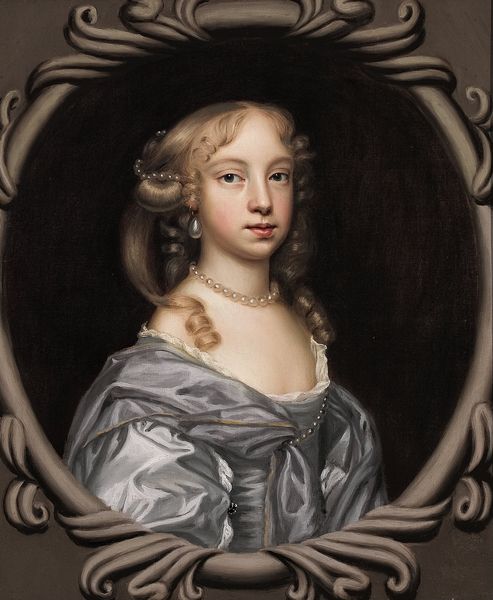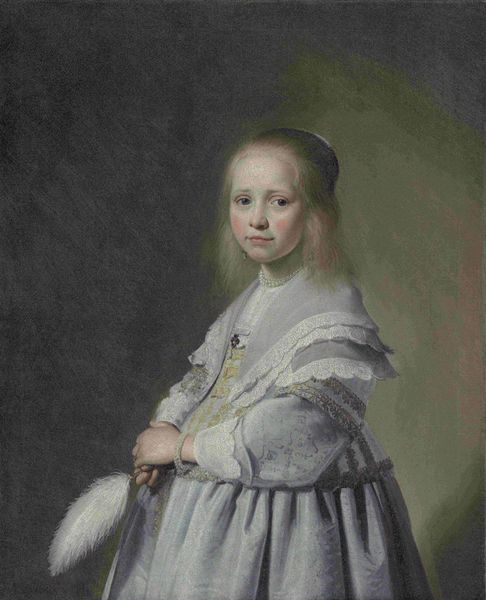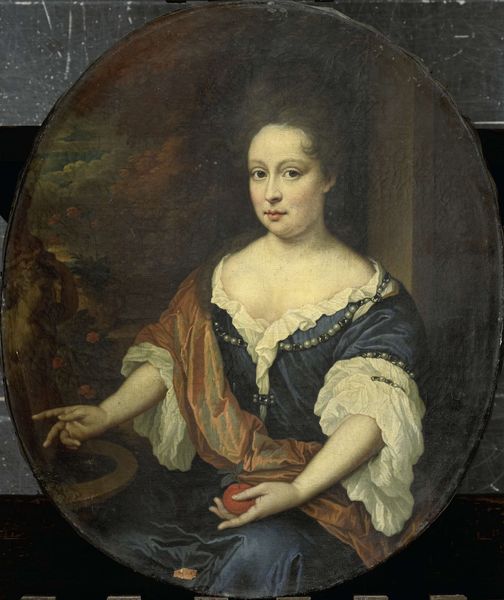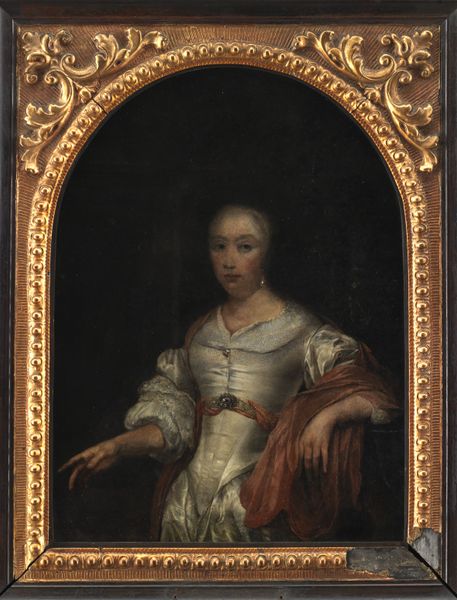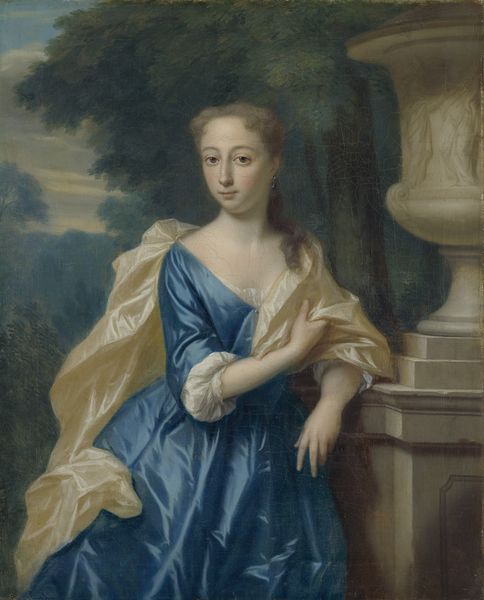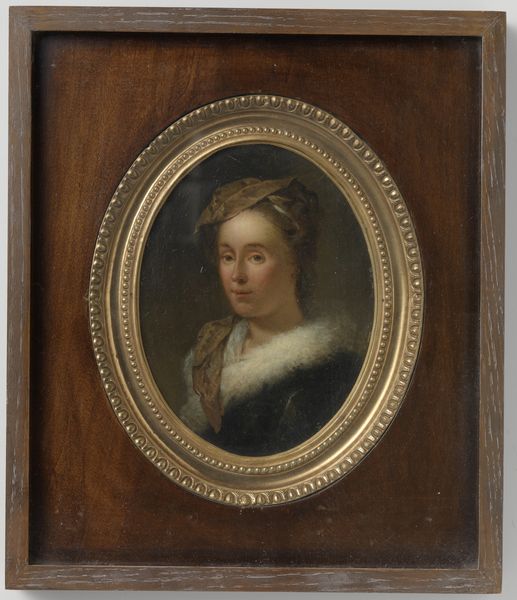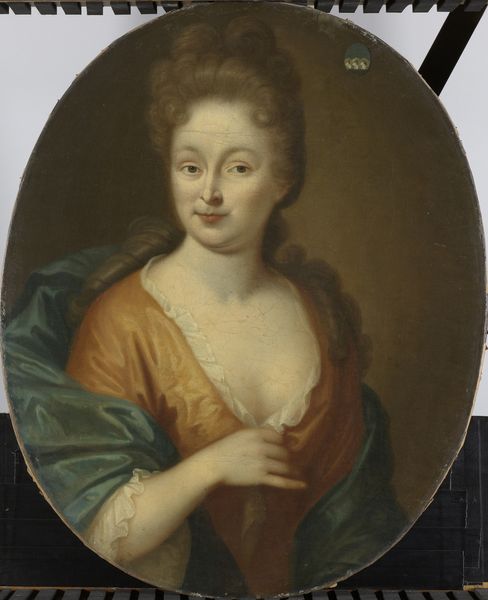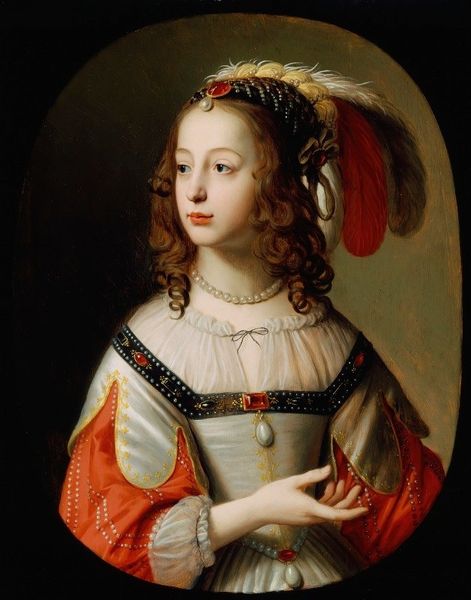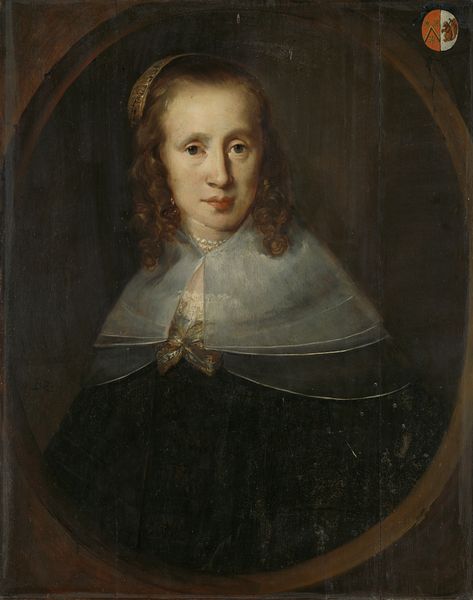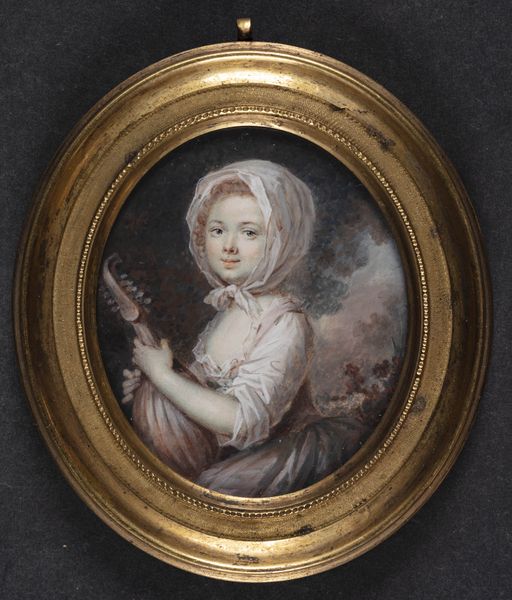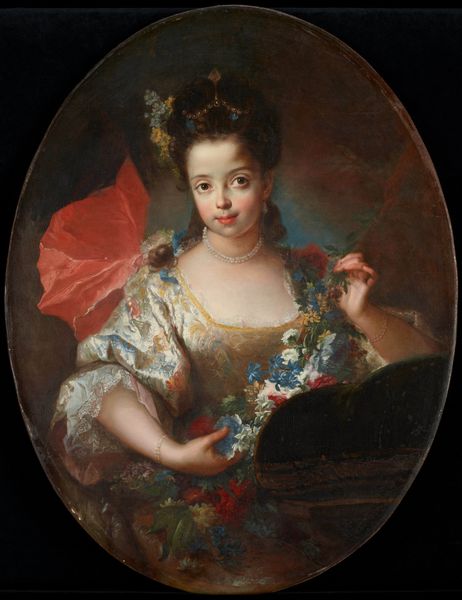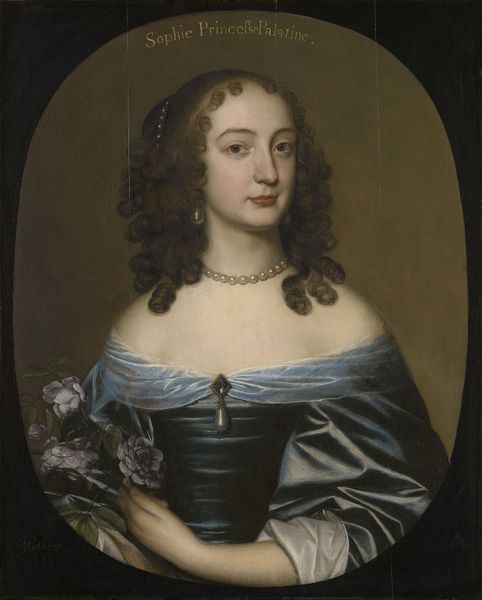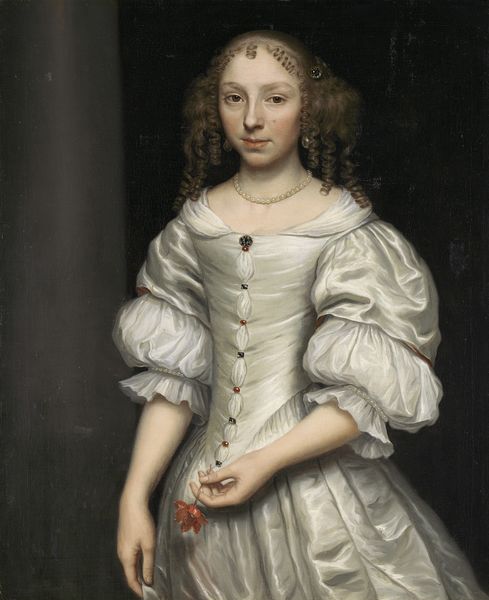
painting, oil-paint
#
portrait
#
baroque
#
painting
#
oil-paint
#
history-painting
#
academic-art
Copyright: Public domain
Curator: This oil-on-canvas portrait from 1648 is attributed to Gerard van Honthorst and depicts Prinzessin Maria von Oranien-Nassau. The young princess, centered against a dark backdrop, has captured my attention immediately. Editor: The scale feels intimate, almost miniature. The delicate sheen on the silk is exquisite, but there is also an undeniable melancholy to it. I can’t help but think about child royalty and their restricted world. Curator: Honthorst utilizes an oval format here, a convention in portraiture during this period to draw focus to the sitter. Notice how her fair complexion and luminous dress are offset by the stark darkness surrounding her form. The texture, the sheen achieved with oil layering. It is very well balanced and effective. Editor: She holds what seems to be another smaller portrait, perhaps a loved one? This detail alone evokes a deep sense of connection despite the distance of centuries. Also the white flowers, possibly lilies of the valley— they represent purity and are tied to motherhood. They reinforce an almost ephemeral fragility. Curator: Precisely, the placement of these flowers, parallel to her gaze, emphasizes the deliberate composition. The painter is constructing this image to highlight societal roles—as well as artistic conventions—regarding this child. Also note the cool hues which emphasize the academic artistry: The strategic balance of colors conveys not only artistic ability, but also intent. Editor: Yes, there's a powerful tension between innocence and expectation embedded in her presentation. That tiny portrait in her hand… Is it a promise of marriage, of dynasty, already weighing upon such young shoulders? It is heart-rending to think of these implications when studying this painting. Curator: Seeing the structure with all those tiny signs arranged to emphasize certain aspects does provide insights for the contemporary beholder. What feels tragic to us may simply be artistic devices utilized during that era to convey specific values. Editor: Even so, viewing this today reminds me of the heavy weight of symbols; what appears decorative to a superficial glance signifies an entire historical period and the individuals living in it. The continuity of symbols shapes our perspective as we view the piece.
Comments
No comments
Be the first to comment and join the conversation on the ultimate creative platform.
